Over the last year, sales of the Type 26 frigate to Australia and Canada have boosted that design to top place in the international frigate market, displacing the Franco-Italian FREMM.
As a result of these success, say analysts at Focecast International, the prominence of the Rolls-Royce MT30 gas turbine engine in the marine propulsion market has significantly grown.
“As noteworthy as the number of sales has been, the impact of the MT30 has been further enhanced by its prestigious order book. The MT30 is now in use by many of the world’s leading professional navies, including the U.S., the U.K., Australia, Canada, Japan and Italy. This is a factor that will support future sales efforts. The MT30 is slowly developing an impressive market presence, but to date its progress in building upon that position has been limited.
The adoption of the MT30 by South Korea for its Incheon class light frigates suggests the future pattern of its deployment. In the first six ships of the Incheon class, a single MT30 replaces the two LM2500s. The MT30 is an expensive turbine, costing almost twice as much as a baseline LM2500. However, the MT30 delivers significantly more power than the LM2500 and is designed to minimize maintenance costs. These considerations bring the two gas turbines to a near cost equivalence.”
However, the firm also offer a word of warning that politics could potentially have a negative impact.
“One negative factor that may become significant is the impending departure of the U.K. from the European Union, a complex process normally referred to as Brexit. There is substantial rancor within both sides over this process that is already resulting in hard words over future business relationships.
It has also resulted in a major political crisis within the U.K. itself. If no amicable solution is found, Rolls-Royce could easily be cut off from future orders from the remaining EU countries. Since GE has been a producer of LM2500s within the European Union, it would certainly move quickly and aggressively to fill this gap.”






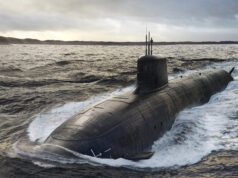
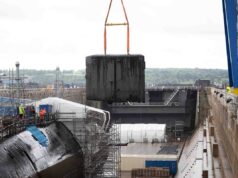
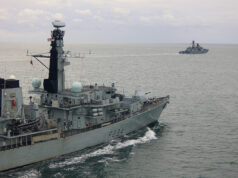


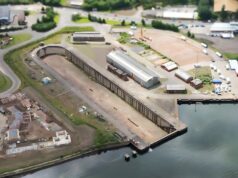
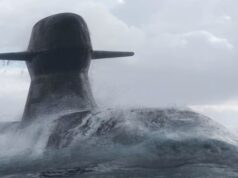

Between the MT30, Rolls-Royce jet engines and companies like Reaction Engines, the UK should be incredibly proud of the way it leads the world in advanced engine design and manufacturing
All going back to the steam engine we invented.
The type 26 is such a sexy ship! I want to marry the thing!
You need to get out more
Yeah maybe I do, but fishing season just stopped!
If a man and a warship love each other very much, what they do in the privacy of their own home is their business 🙂
Hahaha
Shows that perhaps that the decision to go IEP with T45 was a step too far.
Not really? It’s not IEP that’s the issue on the T45, it’s the intercooler on the WR-21 gas turbine (which was ironically chosen over the LM2500, despite recommendations). The QECs use IEP powered by the MT-30 and have no such issue.
Perhaps is used to express a possibility I am not saying it was definitely a bad choice. You are talking about a specific problem while I was talking about a general choice of specific system. And then you mention another ship altogether.
“Shows that” suggests a link between the article, which is discussing the MT-30’s market success, and the decision to adopt a propulsion system with no link to the MT-30. I then provided an example of why there is no link between the T45 engine issues and IEP or the MT-30.
IEP was not a step too far it was the WR-21 which was a lemon (although IEP is expensive, hence not on T26, it works fine on carriers and Queen Mary cruise liner etc.)
Personally I don’t put much faith in Forecast International’s musings.
Of all the Current Customers only Italy is from the EU (not counting UK currently either!) – so this is essentially a non story isn’t it.
I love these pro-remain stories, bullshit and wind.
Pro-remain stories? It’s literally a statement from industry analysts.
American analysts who seem completely oblivious to idea that Brexit will free UK manufacturing to be more responsive to world wide markets where the growth for these engines outstrips by far the intra EU market for Ship Engines. Even Europe builds most of its commercial ships overseas.
https://brandongaille.com/17-european-shipbuilding-industry-statistics-trends-analysis/
Also, if the Engine is as good as they say, then sensible European Nations (rather than Euros in the huff with the UK for leaving) who are in the market for a non-national ship engine would be incredibly idiotic to go for an inferior products just beacuse the French or Germans were fellow EU Members.
So as I said, a Pro-remain scare story, no different than the toilet paper one.
I think you need to learn how to tell the difference between a valid observation and a scare story, just because you do not agree does not make something politically biased. You’re an adult, Douglas.
On the contrary, according to ADS (Aerospace Defence Space, the trade body for the UK’s aerospace and defence manufacturers) just this week “Regulatory divergence would pose a serious risk to our sectors . . . and will result in huge new costs and disruptions to many of our members” and Rolls Royce added “Brexit and the surrending our membership of EASA will give a serious advantage to many of our rivals like Safran, it will take 10 years and between £25m and £40m per year to recreate that expertise that is only currently costing a UK contribution between £1m and £4m annually”.
I hate to break it to you, but just because someone or something points out that Brexit is going to have negative consequences, doesn’t make it pro remain.
Most of the current customers not being in the EU is irrelevant. As the article points out, being outside the EU when the MT-30’s main competitor has a production line inside the EU is unquestionably a disadvantage.
How many Ships & Ships engines have we built for the Euros in the last 20 years? How many are we likely to build if we stay? If we leave?
Does the EU buy anything from outside the EU?
How’s UK industry done since we Joined the EU?
The EU is far less protectionist than the US in procurement.
UK GDP increased 103% from joining the EU in 1973 to 2016, that was more than the US at 97%, Germany at 99% and France at 77%. During this time our ratio of trade to economic output increased from 48% to 67% meaning we have seen an increase in exports, while Median income grew by 67% compared to only 17% in the US meaning individually we are earning more as well.